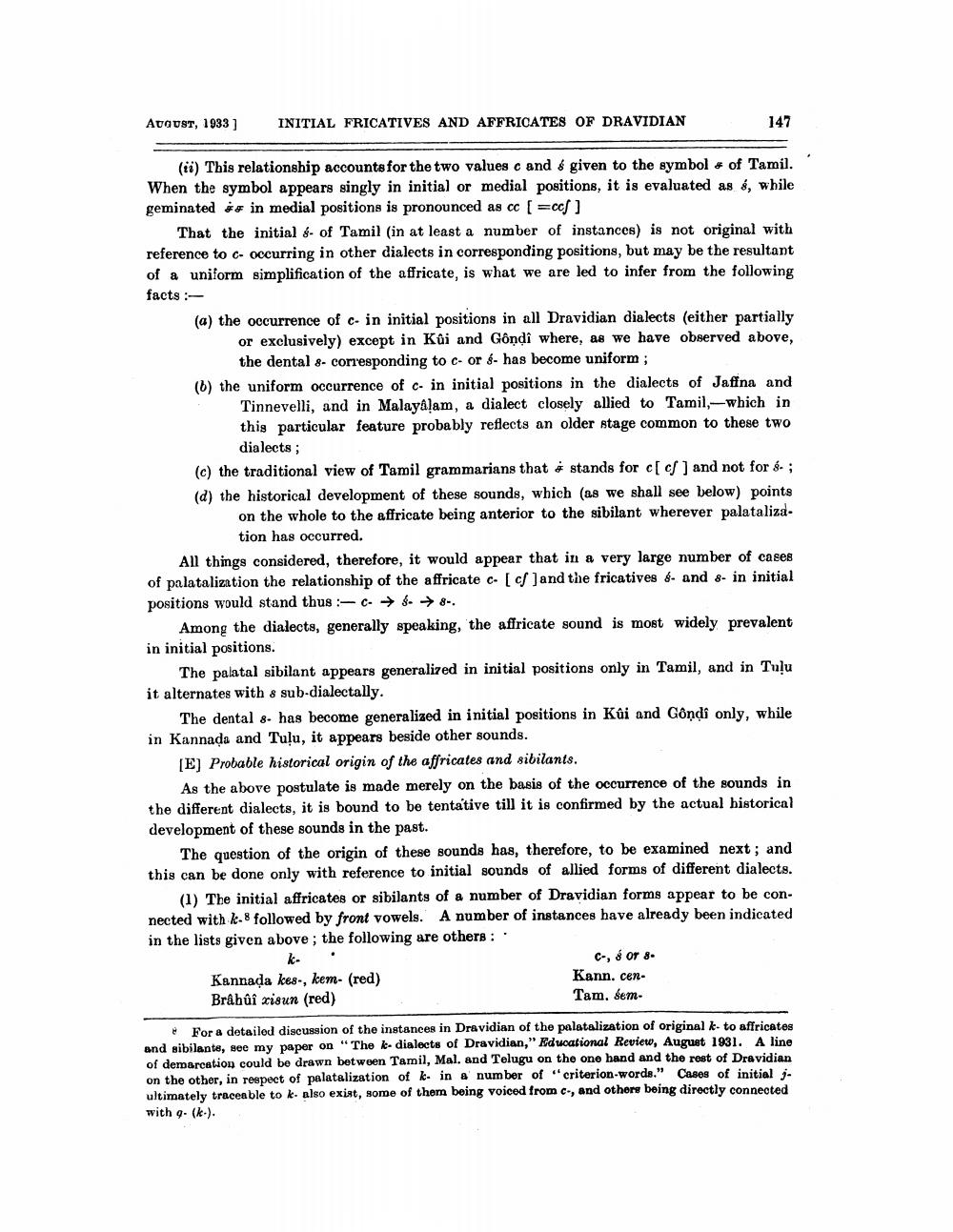________________
August, 1933)
INITIAL FRICATIVES AND AFFRICATES OF DRAVIDIAN
147
(ii) This relationship accounts for the two values c and & given to the symbol of Tamil." When the symbol appears singly in initial or medial positions, it is evaluated as é, while geminated ** in medial positions is pronounced as cc ( = )
That the initial 6- of Tamil (in at least a number of instances) is not original with reference to C- occurring in other dialects in corresponding positions, but may be the resultant of a uniform simplification of the affricate, is what we are led to infer from the following facts - (a) the occurrence of c- in initial positions in all Dravidian dialects (either partially
or exclusively) except in Kui and Gôndi where, as we have observed above,
the dental 8- corresponding to cor - has become uniform ; (6) the uniform occurrence of c- in initial positions in the dialects of Jaffna and
Tinnevelli, and in Malayalam, a dialect closely allied to Tamil, -which in this particular feature probably reflects an older stage common to these two
dialects; (c) the traditional view of Tamil grammarians that stands for c[ S ] and not for . ; (d) the historical development of these sounds, which (as we shall see below) points
on the whole to the affricate being anterior to the sibilant wherever palataliza
tion has occurred. All things considered, therefore, it would appear that in a very large number of cases of palatalization the relationship of the affricate c- [ c )and the fricatives &- and 8-in initial positions would stand thus :- C + $. 8.
Among the dialects, generally speaking, the affricate sound is most widely prevalent in initial positions.
The palatal sibilant appears generalized in initial positions only in Tamil, and in Tuļu it alternates with a sub-dialectally.
The dental 8. has become generalized in initial positions in Kûi and Gôndi only, while in Kannada and Tuļu, it appears beside other sounds.
[E) Probable historical origin of the affricates and sibilants.
As the above postulate is made merely on the basis of the occurrence of the sounds in the different dialects, it is bound to be tentative till it is confirmed by the actual historical development of these sounds in the past.
The question of the origin of these sounds has, therefore, to be examined next; and this can be done only with reference to initial sounds of allied forms of different dialects.
(1) The initial affricates or sibilants of a number of Dravidian forms appear to be connected with k-8 followed by front vowels. A number of instances have already been indicated in the lists given above; the following are others ::
C-, or 8. Kannada kes-, kem- (red)
Kann. cenBrâbûî zisun (red)
Tam, sem
For a detailed discussion of the instances in Dravidian of the palatalization of original k-to affricates and sibilants, see my paper on "The ke dialects of Dravidian," Educational Review, August 1931. A line of demarcation could be drawn between Tamil, Mal. and Telugu on the one hand and the rest of Dravidian on the other, in respect of palatalization of k in a number of "criterion-words." Cases of initial j. ultimately traceable to k- also exist, some of them being voiced from c., and others being directly connected with 9. (k.).




